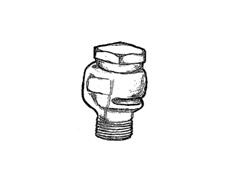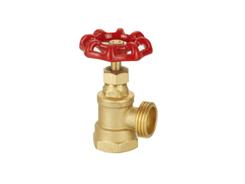All modern solar thermal systems use both vents and vacuum breakers. Vents are used to allow air to escape from a circuit that holds fluid and vacuum breakers do the opposite, letting air in when the internal pressure falls too low.
Automatic Air Vents
Any system that uses fresh water will gradually accumulate air bubbles within it. Since domestic hot water systems use fresh water on the hot water side of the heat exchanger, solar thermal installations need to take that into account.
The problem is that fresh water always contains a little bit of extra oxygen, absorbed naturally. When the water is heated, that extra oxygen is released and forms tiny bubbles. While this is not a big problem, letting these tiny bubbles accumulate into one big bubble can be very bad news, as it will hinder or even block the flow of water through the heat exchanger (especially if it's set up to thermosiphon).
The answer to this problem is automatic air vents , which allow accumulated air bubbles to escape safely. These vents come in many different designs and qualities. As a general rule, you want to aim for a l
arger model made of cast brass, using a high-temperature float.
When you're installing a vent on the closed loop where an antifreeze solar fluid circulates, it's worth setting up a ball valve behind the air vent to isolate it. Since the solar fluid is in a closed loop with a specific amount of liquid and absorbed oxygen, once any excess air has escaped, you can close the ball valve. You don't want to permanently seal it as you'll still need to vent extra air when you change the solar fluid during maintenance, but in the meantime, you don't want the vent operating constantly.
 Vacuum Breakers
Vacuum Breakers
These are valves which are typically found in swimming pool systems and some draindown systems. They consist of a simple plunger which is held closed by internal system pressure. If the pressure drops too low, the plunger falls away from the seat and lets air in.
They're also very useful at the top of fiberglass water tanks, because they stop the internal pressure dropping too low during maintenance draining. Although fiberglass tanks are tough, they are prone to buckling if the internal pressure drops too low.
 Drain valves
Drain valves
Speaking of draining, drain valves are used to remove liquid from the system, as their name suggests. They're common to every type of plumbed system and can be either a ball or gate valve. Ball valves resist high pressure better. Whichever you use, always make sure it's capped off when not in use.